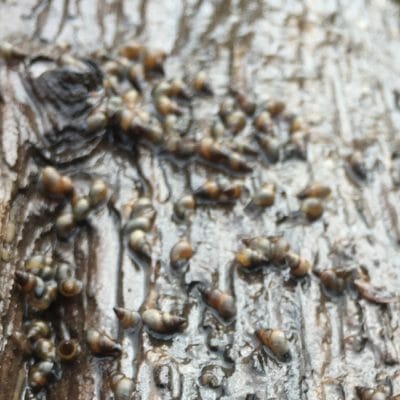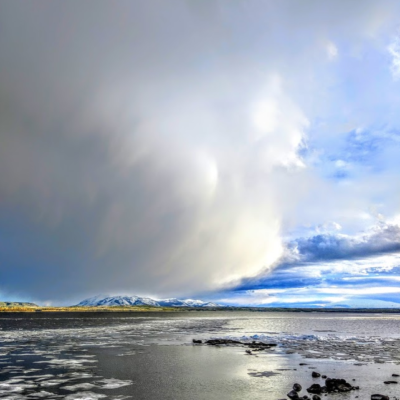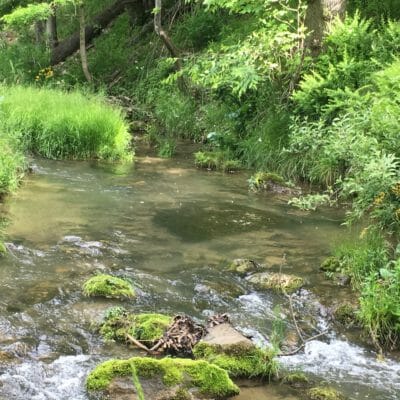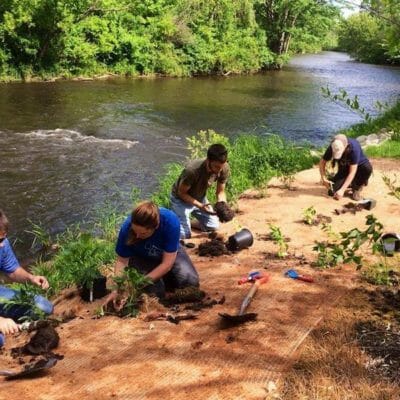By Jamie Vaughan Michigan has no shortage of freshwater lakes, rivers and streams, and local environmental groups are always collaborating to come up with creative ways to protect the precious water resources. In western Michigan, partners joined together to create the Grand River Rainscaping Program, which is helping homeowners, landscapers and contractors learn about and incorporate green infrastructure practices…
More than 180 non-native species have been introduced to the Great Lakes region, and many of them have been categorized as invasive, causing potential threat to native ecosystems and their populations. One relative newcomer is causing concerns about its potential risks to the region’s trout streams. The New Zealand mud snail (Potamopyrgus antipodarum) is an aquatic invasive that has appeared in Great Lakes streams only recently. …
Editor’s note: this is part two of a series on recovering native brook trout. You can read part one here. “What is the name of that tree?” Brandon Keplinger, the district fisheries biologist for West Virginia Division of Natural Resources, asked the 20 or so fifth graders from Slanesville Elementary School in West Virginia. The…
Brian Wimmer, the fly fishing ambassador at Sundance Mountain Resort, says it all when it comes to the proposed Pebble Mine in the headwaters of the world’s most important salmon rivers. “I can’t believe we’re having to do this again,” he says in the Orvis video above. “It just pisses me off. I thought we…
You know spring is taking its time in Yellowstone when ice floes are cruising down the river between Lake Village and Canyon on Memorial Day. It’s just been one of those years—lots of late snow, and, as of Monday, more than a solid week of high-country thunderstorms slowed spring to a crawl. Rain gave way…
A healthy brook trout stream in West Virginia. Editor’s note: This is part one of a two part series on brook trout restoration in West Virginia, and well, everywhere else. About six weeks ago, while helping the Department of Natural Resources to stock trout in a stream, West Virginia Gov. Jim Justice said, “We dump…
Trout Unlimited has received funding from the U.S. Forest Service, through the Great Lakes Restoration Initiative, to plant nearly 17,000 trees along coldwater streams in Michigan. The project, “Reducing Runoff in the Rogue River Watershed,” aims to address stormwater runoff that pollutes, erodes, and warms the important western Michigan trout fishery by planting trees at…








